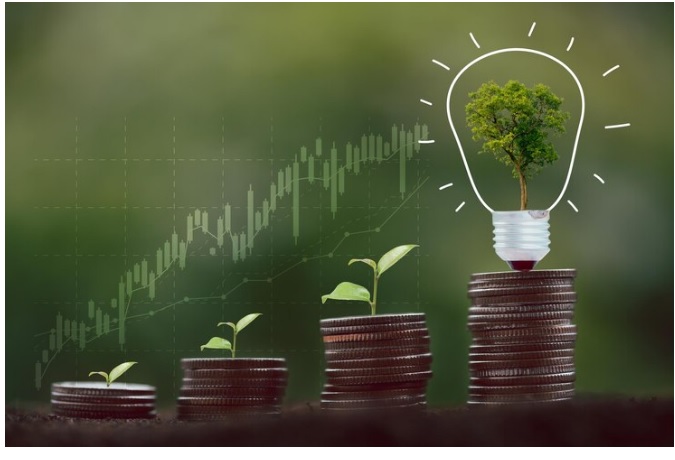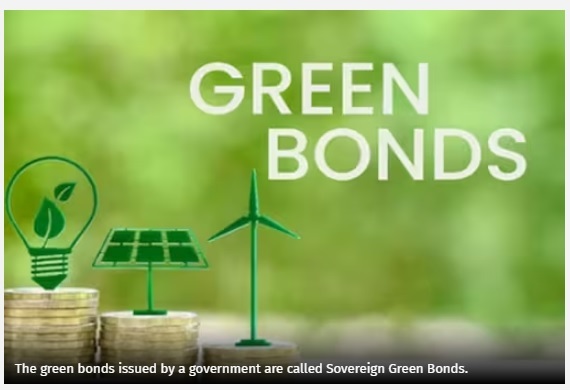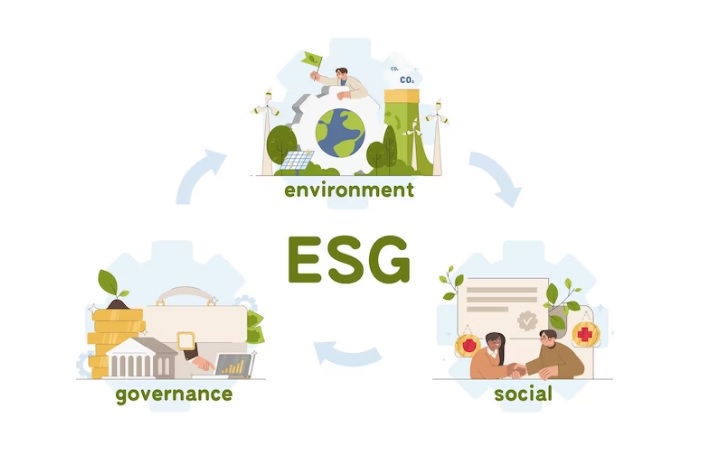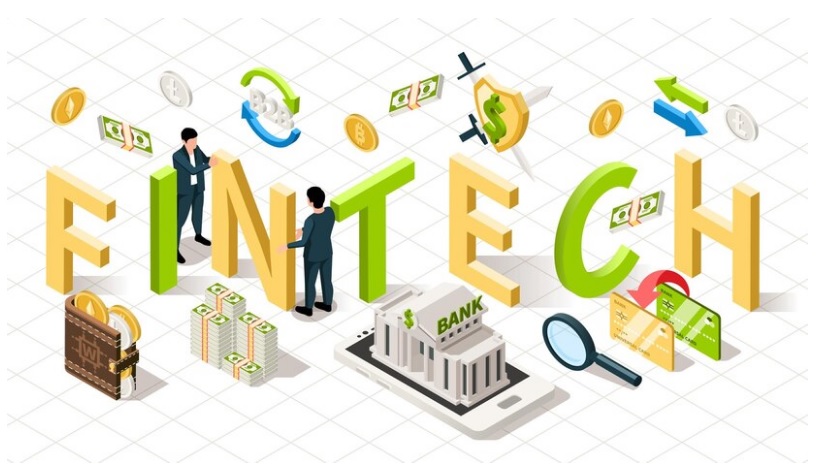The Green Gold Rush:
Unlocking the Future of Green Finance!

Introduction:

In this blog post, I’ll delve into Unlocking the Future of Green Finance and uncover its meaning, significance, and potential to transform our economy and save our planet. Get ready to discover how finance and sustainability converge to create a greener future for us all.
In a world increasingly aware of the environmental challenges we face, a new player has emerged in the financial landscape: Green Finance. But what exactly is green finance, and why is it gaining so much attention?
The Rise of Green Finance:
A Paradigm Shift Green finance has emerged as the guiding force in reshaping our financial systems. It represents a paradigm shift where profitability intertwines with environmental consciousness. As the world collectively wakes up to the pressing need for sustainable practices, investors and businesses are recognizing the potential for financial gains while contributing to a greener future.

Investing in a Greener Tomorrow:

Enterprising individuals are increasingly looking to invest in ventures that align with their values, generating substantial returns while positively impacting the environment. This trend has given birth to a whole new breed of investment opportunities, including renewable energy projects, green bonds, sustainable mutual funds, and eco-friendly startups.
Circular Economy:
The circular economy, where resources are used, recycled, and repurposed in a closed-loop system, is gaining momentum. By minimizing waste and maximizing resource efficiency, the circular economy presents vast opportunities for sustainable investments. From recycling infrastructure to innovative business models centered around product longevity, the circular economy holds the key to unlocking a greener and more prosperous future.

How is the Government Promoting Green Finance?:

In the global fight against climate change and the urgent need for sustainable development, governments worldwide are playing a crucial role in promoting and driving the adoption of green finance. Recognizing the immense potential of finance to catalyze positive environmental change, governments are implementing various policies and initiatives to encourage the growth of green finance.
Here are some key ways in which governments are promoting green finance:
a) Policy and Regulatory Frameworks:
Governments are developing comprehensive policy and regulatory frameworks that incentivize and support green finance activities. They are implementing measures such as tax incentives, subsidies, and grants to encourage investments in renewable energy, energy efficiency, sustainable infrastructure, and other environmentally friendly projects. Additionally, governments are introducing regulations that mandate or encourage companies to disclose their environmental risks and impacts, enabling investors to make more informed decisions aligned with sustainability objectives. This is an important step towards Unlocking the Future of Green Finance.

b) Green Bonds and Financing Instruments:

In the global fight against climate change and the urgent need for sustainable development, governments worldwide are playing a crucial role in promoting and driving the adoption of green finance. Recognizing the immense potential of finance to catalyze positive environmental change, governments are implementing various policies and initiatives to encourage the growth of green finance. This is an important step towards Unlocking the Future of Green Finance.
c) Financial Support and Guarantees:
Governments are developing comprehensive policy and regulatory frameworks that incentivize and support green finance activities. They are implementing measures such as tax incentives, subsidies, and grants to encourage investments in renewable energy, energy efficiency, sustainable infrastructure, and other environmentally friendly projects. Additionally, governments are introducing regulations that mandate or encourage companies to disclose their environmental risks and impacts, enabling investors to make more informed decisions aligned with sustainability objectives. This is an important step towards Unlocking the Future of Green Finance.

d) Sustainable Procurement Policies:

Governments are adopting sustainable procurement policies, ensuring that public spending prioritizes environmentally friendly goods and services. By favoring suppliers and contractors with strong sustainability credentials, governments create market demand for sustainable products and solutions. This, in turn, encourages businesses to adopt sustainable practices and innovations, driving the growth of green finance. This is an important step towards Unlocking the Future of Green Finance.
e) Capacity Building and Knowledge Sharing:
Governments play a vital role in capacity building and knowledge sharing initiatives. They collaborate with financial institutions, industry experts, and academia to develop training programs, workshops, and guidelines for financial professionals to enhance their understanding of green finance. Governments also support research and knowledge dissemination on green finance, fostering innovation and best practices across the financial sector. This is an important step towards Unlocking the Future of Green Finance.

f) International Cooperation:

Governments are adopting sustainable procurement policies, ensuring that public spending prioritizes environmentally friendly goods and services. By favoring suppliers and contractors with strong sustainability credentials, governments create market demand for sustainable products and solutions. This, in turn, encourages businesses to adopt sustainable practices and innovations, driving the growth of green finance.
The proactive role of governments in promoting green finance is instrumental in accelerating the transition to a low-carbon, sustainable economy. With their policy frameworks, financial incentives, and international collaboration, governments are paving the way for increased investment in green projects, driving innovation, and ultimately shaping a more environmentally resilient and prosperous world. This is an important step towards Unlocking the Future of Green Finance.
How are Private Institutions Promoting Green Finance?:
Private institutions, including banks, asset management firms, insurance companies, and fintech startups, are increasingly recognizing the importance of green finance and actively taking steps to promote its growth.
Here are some key ways in which private institutions are promoting green finance:

a) Integration of ESG Factors:

Private institutions are incorporating ESG factors into their investment and lending decisions. This integration encourages capital flows towards environmentally friendly projects and companies, signalling a strong commitment to sustainable finance. This is an important step towards Unlocking the Future of Green Finance.
b) Sustainable Investment Products:
Private institutions are developing and offering a wide range of sustainable investment products to cater to the growing demand for environmentally conscious investing. These products include green bonds, sustainable mutual funds, impact investing funds, and ESG-focused exchange-traded funds (ETFs). By providing individuals and institutions with access to these products, private institutions enable them to invest in projects and businesses aligned with their sustainability values. This is an important step towards Unlocking the Future of Green Finance.

c) Green Lending and Financing:

Private institutions are actively providing green loans and financing options to support environmentally friendly initiatives. They offer specialized loans for renewable energy projects, energy-efficient building constructions, sustainable agriculture, and clean technology innovation. This is an important step towards Unlocking the Future of Green Finance.
d) Sustainable Risk Management:
Private institutions are incorporating environmental risk assessment and management practices into their operations. They evaluate the potential impact of environmental risks, such as climate change, on their portfolios and develop risk mitigation strategies accordingly. This is an important step towards Unlocking the Future of Green Finance.

e) Green Bonds and Sustainable Finance Advisory:

Private institutions are actively providing green loans and financing options to support environmentally friendly initiatives. They offer specialized loans for renewable energy projects, energy-efficient building constructions, sustainable agriculture, and clean technology innovation. This is an important step towards Unlocking the Future of Green Finance.
f) Collaboration and Partnerships:
Private institutions are incorporating environmental risk assessment and management practices into their operations. They evaluate the potential impact of environmental risks, such as climate change, on their portfolios and develop risk mitigation strategies accordingly. This is an important step towards Unlocking the Future of Green Finance.

The Rise of Green Fintech:

In recent years, a powerful alliance has formed between two major disruptors: Green finance and fintech. This dynamic partnership, aptly named "Green Fintech," is rapidly gaining momentum and reshaping the financial landscape with its innovative solutions and sustainable vision.
a) Green Fintech refers to the application of financial technology to address environmental challenges and promote sustainable practices. It harnesses the power of digital innovation to drive positive change and create a more sustainable future. By leveraging advanced technologies such as blockchain, artificial intelligence, and data analytics, green fintech is revolutionizing the way we invest, transact, and manage our finances.
b) One of the key areas where green fintech is making a significant impact is in enabling access to sustainable investments. Through user-friendly platforms and robo-advisory services, individuals are empowered to invest their money in environmentally friendly projects and companies. This democratization of green investments not only provides financial returns but also allows individuals to align their portfolios with their values, driving positive environmental outcomes.
c) Moreover, green fintech is facilitating the integration of environmental, social, and governance (ESG) factors into financial decision-making. With the help of advanced algorithms and big data analytics, investors can assess the sustainability performance of companies, manage risks, and make informed investment choices. This integration of ESG considerations ensures that financial decisions go beyond short-term profitability, promoting long-term sustainability and resilience.

d) Another exciting aspect of green fintech is its role in promoting financial inclusion. By leveraging mobile banking and digital payment solutions, green fintech is expanding access to financial services for underserved communities, including those in remote areas or developing countries. This inclusivity not only empowers individuals economically but also enables them to participate in sustainable finance initiatives, such as microloans for renewable energy projects or mobile-enabled carbon credit trading.
e) Furthermore, green fintech is spearheading the development of innovative financing models for renewable energy projects and sustainable infrastructure. Through crowdfunding platforms, peer-to-peer lending, and smart contracts powered by blockchain technology, green fintech is unlocking new avenues for funding green initiatives. These models facilitate direct interaction between investors and project developers, streamline the financing process, and reduce administrative overheads, making it easier to channel funds into renewable energy and sustainability-focused projects.
f) The rise of green fintech is a testament to the growing awareness and urgency to address environmental challenges. It offers an exciting blend of finance and technology that can accelerate the transition to a more sustainable economy. This is an important step towards Unlocking the Future of Green Finance.
Guidelines by the SEBI for Green Bonds

The Securities and Exchange Board of India (SEBI), the regulatory authority overseeing securities markets in India, has taken proactive steps to promote the issuance and listing of green bonds in the country.
Here are some key guidelines implemented by SEBI:
a) Definition and Use of Proceeds:
According to the guidelines, green bonds are debt securities where the proceeds are exclusively used for financing or refinancing green projects. The projects must contribute to environmental sustainability and align with internationally accepted green standards.
b) Eligibility and Reporting:
Issuers seeking to raise capital through green bonds are required to fulfil certain eligibility criteria. They need to disclose their environmental objectives, use of proceeds, and an evaluation of the environmental benefits of the projects financed. Additionally, issuers must report on the use of proceeds and the environmental impact on an annual basis until the projects are completed.
c) Evaluation and Certification:
SEBI encourages issuers to obtain external reviews and certifications from recognized independent experts. This evaluation process ensures that the environmental claims made by issuers are verified and credible. It provides investors with greater confidence in the green credentials of the projects being financed. This is an important step towards Unlocking the Future of Green Finance.
d) Disclosure Requirements:
SEBI mandates Issuers must disclose information related to the environmental objectives, project selection criteria, environmental risks, and the management of proceeds.
e) Monitoring and Reporting:
Issuers are required to establish a robust monitoring and reporting framework for green bonds. This monitoring mechanism ensures accountability and helps maintain the integrity of the green bond market.
f) Listing and Compliance:
Green bonds issued in India are subject to the listing and compliance requirements set by SEBI. The guidelines ensure that the listing and trading of green bonds follow established norms, enhancing liquidity and investor confidence. This is an important step towards Unlocking the Future of Green Finance.
SEBI's initiatives contribute to India's efforts in transitioning towards a low-carbon and sustainable economy.
Conclusion:

